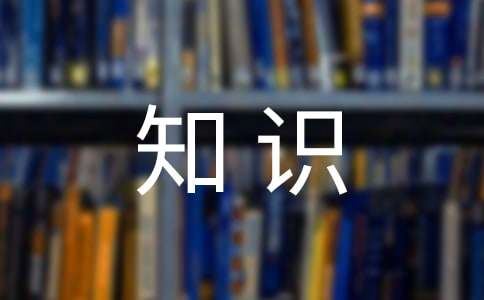苏教版初一英语必备知识点
在我们平凡无奇的学生时代,不管我们学什么,都需要掌握一些知识点,知识点是知识中的最小单位,最具体的内容,有时候也叫“考点”。想要一份整理好的知识点吗?以下是小编为大家收集的苏教版初一英语必备知识点,欢迎阅读与收藏。

初一英语必备语法知识
动词
A) 第三人称单数
当动词是第三人称单数时,动词应该加s,如下:
一) 一般在词后加s
如:comes, spells, waits[weit等待], talks, sees, dances,
trains [trein火车n培训v]
二) 在x, sh, ch, s, tch后加es。
如:watches, washes[w, 洗涤], wishes[wi祝愿v], finishes
三)1)以辅音字母加y结尾的变y为i再加es。
如:study-studies, hurry-hurries [hri匆忙], try-tries(尝试)
2)以元音字母加y结尾的直接加s。
如:plays, says, stays(停留、保持),
enjoys(欣赏), buys(购买)
三) 以o结尾加es。
如:does, goes
四) 特殊的有:
are-is, have-has
B) 现在分词
当我们说某人正在做什么事时,动词要使用分词形式,不能用原形,构成如下:
一) 一般在后加ing。
如:spell-spelling, sing-singing, see-seeing, train-training, play-playing, hurry-hurrying, watch-watching, go-going, do-doing
二) 以不发音e的结尾的去掉e再加ing。
如:dance-dancing,wake-waking(叫醒、醒来),take-taking(拿、取、接收),practice [prktis实习、练习] -practicing,write-writing, have-having
三) 以重读闭音节结尾且一个元音字母加一个辅音字母
要双写最后的辅音字母再加ing。
如:put-putting, run-running,
初一英语知识归纳
There be句型
(1)There be句型主要用以表达“某处(某时)有某人(某物)。”其基本结构为“There be+某物(某人)+某地(某时)”其中there是引导词,没有词义;主语是be后面的名词, be是谓语动词,在一般现在时中be只用is和are两种形式。下面这首歌诀可帮你巧记there be句型结构:
There be放句首,主语跟在后。地、时放句末,强调置前头。There is a book on the desk. 有时为了强调地点,也可把介词短语放在句首。如:On the desk there is a book.
(2)There be句型中的be动词如何确定呢?请先看看下面这首歌诀:
Be动词,有三个,am,is还有are。“There be”真特别,不留am只留俩,那就是is还有are。要用is还是are,须看其后的名词是单数还是复数。若是单数或不可数名词用is,否则就用are。如:
①There is a tree behind the house.
②There is some water(水)in the bottle(瓶子).
③There are some pears in the box.
(3)注意:如果“be”后的主语是由and连接的两个或两个以上的名词,那么be的形式要遵循“远亲不如近邻”的原则。也就是说,“be”的形式是由与它最近的那个名词来确定的。若那个名词是单数或不可数名词要用is,是复数就用are。如:
①There is a book and some pens on the floor.
②There are some pens and a book on the floor.
初一英语知识要点
1.陈述句
肯定陈述句 a) This is a book. (be动词)
b) He looks very young. (连系动词)
c) I want a sweat like this. (实义动词)
d) I can bring some things to school. (情态动词)
e) There’s a computer on my desk. (There be结构)
否定陈述句
a) These aren’t their books.
b) They don’t look nice.
c) Kate doesn’t go to No. 4 Middle School.
d) Kate can’t find her doll.
e) There isn’t a cat here. (=There’s no cat here.)
2. 祈使句
肯定祈使句 a) Please go and ask the man.
b) Let’s learn English!
c) Come in, please.
否定祈使句a) Don’t be late.
b) Don’t hurry.
3. 疑问句
1) 一般疑问句
a) Is Jim a student?
b) Can I help you?
c) Does she like salad?
d) Do they watch TV? e) Is she reading?
肯定回答:
a) Yes, he is.
b) Yes, you can.
c) Yes, she does.
d) Yes, they do.
e) Yes, she is.
否定回答:
a) No, he isn’t.
b) No, you can’t.
c) No, she doesn’t.
d) No, they don’t.
e) No, she isn’t.
2) 选择疑问句 Is the table big or small? 回答 It’s big./ It’s small.
3) 特殊疑问句
① 问年龄 How old is Lucy? She is twelve.
② 问种类 What kind of movies do you like? I like action movies and comedies.
③ 问身体状况 How is your uncle? He is well/fine.
④ 问方式 How do/can you spell it? L-double O-K.
How do we contact you? My e-mail address is cindyjones@163.com.
⑤ 问原因 Why do you want to join the club?
⑥ 问时间 What’s the time? (=What time is it?) It’s a quarter to ten a.m..
What time do you usually get up, Rick? At five o’clock.
When do you want to go? Let’s go at 7:00.
初一英语必备知识点
句式
1.陈述句
肯定陈述句
a) This is a book. (be动词)
b) He looks very young. (连系动词)他看起来很年轻
c) I want a sweat [swet出汗] like this(像这样)(实义动词)我想像这样出汗d) I can bring some things to school. (情态动词)我可以带一些东西到学校e) Theresa computer on my desk. (There be结构)有一个电脑在我的桌子上否定陈述句
a) These arent their books.这些不是他们的书
b) They dont look nice.他们看起来不太好
c) Kate doesnt go to No. 4 Middle School.凯特不去第4中学d) Kate cant find her doll.凯特找不到她的洋娃娃
e) There isnt a cat here. (=Theres no cat here.)这里没有一只猫
2.祈使句
肯定祈使句
a) Please go and ask the man.请去问那个人
b) Lets learn English!让我们学习英语!
c) Come in, please.请进。
否定祈使句
a) Dont be late.不要迟到。
b) Dont hurry.不要着急。
3.疑问句
1)一般疑问句肯定回答否定回答a) Is Jim a student? Yes, he is. No,he isnt b) Can I help you? Yes, you can. No,you cant c) Does she like salad?她喜欢做沙拉?Yes, she does. No,she doesnt d) Do they watch TV?他们看电视吗? Yes, they do.
2) Is she reading?她正在读吗? Yes, she is. No,they dont No,she,isnt
初一英语必备知识点
一、48个国际音标
及26个英文字母的正确书写要熟练掌握元音和辅音,5个元音字母(a, e, i, o, u),字母的正确占格及单词间距。
字母书写同学们都应该没有问题的,小学已经学了好几年的英语了,26个字母的大小写同学们是没问题的,主要要注意一下单词的书写,特别是专有名词(首字母必须大写)!
二、be动词的用法
be动词
有三种变形,分别是:am, is, are。记忆口诀:“我”用am, “你”用are, is用于“他、她、它”;单数全都用is,复数全部都用are。
be动词就是咱们所所说的系动词,相对来说比较简单,只要同学们分清楚be动词的三种形式什么时候运用就可以了。
三、人称及人称代词的不同形式(主格和宾格)
1、三种人称:第一人称(I, we),第二人称(you, you),第三人称(he, she, it, they)。
2、人称代词的主格,即人称代词位于句子主语位置时的形态:I, We, You, You, He, She, It, They。
3、人称代词的宾格,即人称代词位于句子宾语位置时的形态:me, us, you, you, him, her, it,them
4、形容词性物主代词:my, our, your, your, his, her, its, their。
5、名词性物主代词:mine, ours, yours, yours, his, hers, its, theirs。
6、反身代词:myself, ourselves, yourself, yourselves, himself, herself, itself, themselves。
对于初一同学们来说,反身代词用的相对比较少,主要把主格、宾格、和物主代词记清楚,特别弄清楚形容性物主代词和名词性物主代词的区别:形容词性物主代词后必须+名词,名词性物主代词单独使用,后面不能加名词。
【初一英语知识点】相关文章:
初一英语知识点12-05
初一英语上册知识点07-28
初一英语知识点(精选6篇)01-26
外研社初一英语知识点大全05-27
初一英语冠词知识点的归纳01-27
初一英语必备的知识点汇总12-03
初一英语重要知识点的汇总12-03
人教版初一英语知识点总结11-30
初一英语的主要知识点归纳12-01